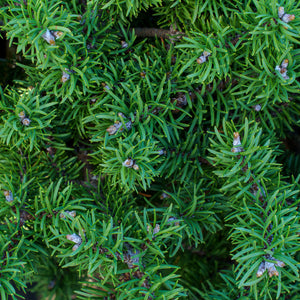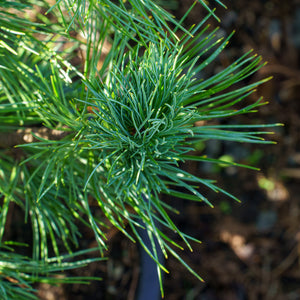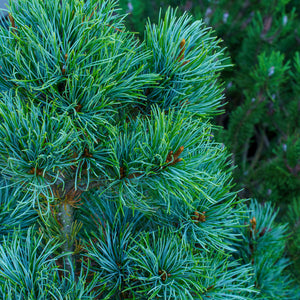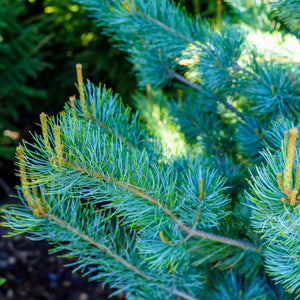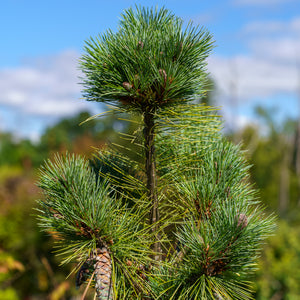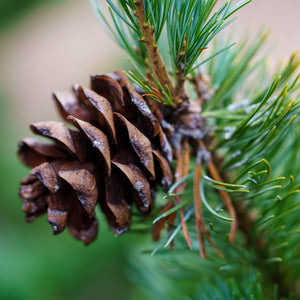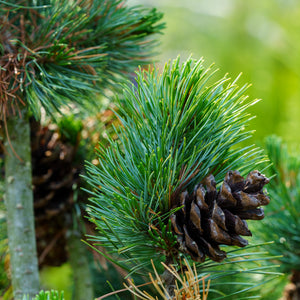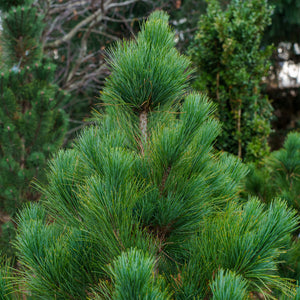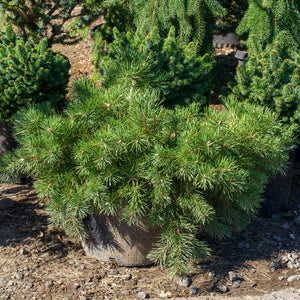The Pine Guide
Pine trees bring a majestic and timeless allure to any landscape. With their towering height, distinctive needles, and evergreen nature, pine trees command attention and infuse outdoor spaces with a sense of natural grandeur. These remarkable trees are renowned for their adaptability and resilience, thriving in a wide range of environments with proper care and nurturing. Whether you seek a tranquil forest retreat or a striking focal point for your garden, pine trees are an exceptional choice that will leave a lasting impression.
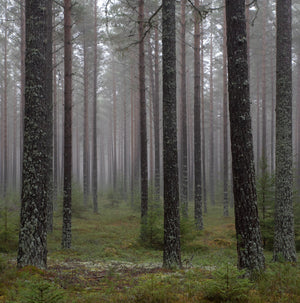
About
Pine trees, belonging to the Pinus genus, encompass a diverse group of evergreen trees revered for their remarkable presence and ecological significance. With numerous recognized species, pine trees can be found across various regions of the world, including North America, Europe, and Asia. These magnificent trees are characterized by their distinct features and vital role in supporting local ecosystems.
One of the defining characteristics of pine trees is their needle-like leaves, which are arranged in bundles or clusters. These needles come in various lengths and shades of green, providing a unique texture and adding visual interest to the tree's overall appearance. Unlike deciduous trees, pine trees maintain their foliage throughout the year, offering a constant splash of green in the landscape.
Pine trees hold great ecological importance, providing habitat, food, and shelter for a wide range of wildlife. Their dense branches and evergreen canopy offer protection to birds and small mammals, while their seeds, known as pine cones, serve as a valuable food source. Pine trees also contribute to the overall health of forests by improving soil quality through their needle litter and acting as a windbreak, reducing erosion.
These versatile trees exhibit adaptability to different soil types and environmental conditions. While they generally prefer well-drained soil, pine trees can thrive in a variety of settings, including sandy or rocky terrain. They are also known for their resilience in harsh climates, with some species able to withstand cold temperatures, strong winds, and drought conditions.
Whether utilized as a majestic centerpiece in a garden, planted in rows for windbreaks or privacy screens, or incorporated into naturalistic landscapes, pine trees impart a sense of timelessness and natural beauty to any setting. Popular species of pine trees include the Eastern White Pine (Pinus strobus), valued for its soft, blue-green needles and graceful form, and the Ponderosa Pine (Pinus ponderosa), known for its distinctive bark and large, long-lasting pine cones.
By carefully selecting and nurturing pine trees in your landscape, you not only enhance the aesthetic appeal of your outdoor space but also contribute to the preservation of these remarkable trees and the diverse ecosystems they support. Their evergreen charm, ecological significance, and enduring presence make pine trees a remarkable addition to any landscape.
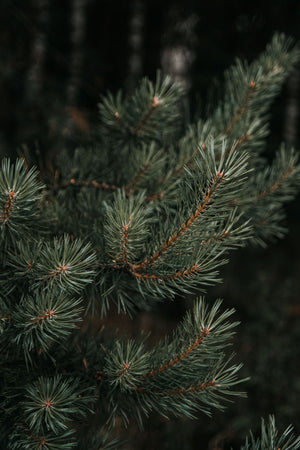
Planting
Pine trees have specific planting requirements to ensure their successful establishment and growth. Here are some general guidelines for planting and caring for pine trees:
Soil: Pine trees thrive in well-drained soil that is slightly acidic. They prefer soil with a pH between 5.5 and 6.5. Before planting, prepare the site by loosening the soil and removing any weeds or grass. Incorporate organic matter, such as compost or aged manure, to improve soil fertility and drainage.
Sunlight: Pine trees require full sun to partial shade for optimal growth. Choose a location that receives at least six hours of direct sunlight each day. Adequate sunlight promotes healthy foliage development and overall tree vigor.
Watering: Adequate watering is crucial during the early stages of pine tree establishment. After planting, water the tree deeply and thoroughly to ensure the roots receive sufficient moisture. Provide regular irrigation throughout the first year, especially during dry periods. Water deeply once or twice a week, allowing the soil to dry slightly between waterings. Avoid overwatering, as it can lead to root rot and other diseases.
Mulching: Apply a layer of organic mulch around the base of your pine tree to conserve moisture, suppress weed growth, and regulate soil temperature. Use wood chips, pine straw, or compost as mulch, making sure to keep it a few inches away from the trunk to prevent excess moisture accumulation and potential fungal issues. Mulching also helps protect the shallow root system of young pine trees.
Pruning: Pine trees generally require minimal pruning. Remove any dead, damaged, or diseased branches to maintain the tree's health and aesthetics. Prune during late winter or early spring before new growth begins. Use clean and sharp pruning tools to make clean cuts and minimize the risk of infections.
By following these basic planting and care guidelines, you can ensure the successful establishment and healthy growth of your pine trees. With proper care, your pine trees will thrive, adding beauty and a touch of evergreen elegance to your landscape for many years to come.
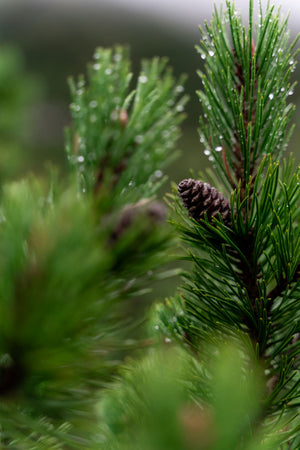
Care
Pine trees require specific care to ensure their optimal growth and health. Here are some general guidelines for the care of pine trees:
Watering: During the first year after planting, provide regular watering to establish a strong root system. Water deeply and thoroughly, ensuring the soil is evenly moist but not waterlogged. As the tree matures, pine trees are generally drought-tolerant and do not require frequent watering. However, during extended periods of dry weather, supplemental watering may be necessary to keep the soil adequately moist.
Pruning: Pruning pine trees is typically minimal and focused on maintaining their natural shape and removing any dead, damaged, or diseased branches. Prune during late winter or early spring before new growth emerges. Avoid heavy pruning as it can disrupt the tree's growth and lead to potential stress.
Fertilizing: Pine trees generally do not require frequent fertilization. However, if the tree shows signs of nutrient deficiencies, such as yellowing needles or stunted growth, a slow-release, balanced fertilizer can be applied in the spring. Follow the recommended application rates and timing provided by the manufacturer. Avoid over-fertilization, as it can harm the tree's health and lead to excessive foliage growth.
Soil and Sunlight: Pine trees thrive in well-drained soil with a slightly acidic pH. They can tolerate various soil types, including sandy or clay soils, as long as good drainage is ensured. Provide full sun to partial shade for pine trees, with at least six hours of direct sunlight each day. Partial shade can be beneficial in regions with intense heat.
Mulching: Apply a layer of organic mulch around the base of your pine tree, extending it a few feet from the trunk. Mulch helps retain soil moisture, suppresses weed growth, and regulates soil temperature. Use wood chips, pine straw, or bark as mulch, keeping it a few inches away from the trunk to prevent moisture buildup and potential rotting.
Pests and Diseases: Pine trees are generally resistant to pests and diseases. However, they can be susceptible to certain issues such as pine needle scales, pine tip moths, or pine wilt disease in some regions. Regularly inspect your tree for any signs of pest infestation or disease and take appropriate measures if needed. Maintaining overall tree health through proper care and maintenance practices is the best defense against pests and diseases.
By following these basic care guidelines, your pine trees will thrive and bring beauty, texture, and a sense of tranquility to your landscape for years to come.
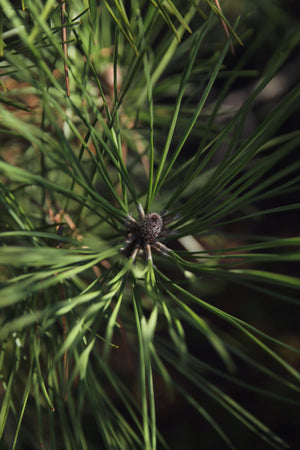
How To Use
Pine trees offer versatility and can be used in various ways to enhance your landscape. Here are some recommendations based on their characteristics:
Focal point: Pine trees can create a striking focal point in your landscape with their tall and elegant form. Plant a single pine tree in a prominent location to add height and visual interest, making it a captivating centerpiece for your garden.
Windbreak: Pine trees are known for their dense foliage and ability to withstand strong winds. Use them to create a natural windbreak or barrier, planting them in a row to protect your garden, home, or outdoor living spaces from harsh winds.
Privacy screen: Take advantage of the dense branches and evergreen nature of pine trees to establish a natural privacy screen. Plant them in a row along your property line to create a visually pleasing and effective barrier that enhances privacy and adds a sense of seclusion.
Background and screening: Pine trees can serve as a backdrop or screen for other plants or structures in your landscape. Use them strategically to create depth and visual layers, adding depth and interest to your garden design.
Erosion control: The extensive root systems of pine trees help stabilize soil and prevent erosion. Plant them on slopes or areas prone to erosion to reinforce the soil and protect against runoff.
Wildlife habitat: Pine trees provide habitat and food sources for various wildlife species. Their branches offer shelter, and their seeds are a source of food for birds and small mammals. By planting pine trees, you can attract wildlife and create a vibrant ecosystem in your garden.
Christmas tree: Certain species of pine trees, such as the Douglas fir or Norway spruce, are popular choices for Christmas trees. If you're looking to have a fresh and fragrant Christmas tree each year, consider planting a pine tree species that suits your preferences.
When selecting pine trees for your landscape, consider the specific species, growth habits, and environmental requirements. Ensure they are planted in areas that receive adequate sunlight and provide well-drained soil. With their versatility and natural beauty, pine trees can elevate the aesthetics and functionality of your outdoor space.
Conclusion
Pine trees are a captivating and versatile addition to any landscape. With their tall and elegant form, dense foliage, and diverse uses, pine trees bring both aesthetic appeal and practical benefits to your outdoor space. By following proper planting and care practices, you can fully utilize the potential of pine trees and create a lasting impact in your landscape. Whether you desire a striking focal point, a natural windbreak, or a private retreat, pine trees can fulfill various roles and enhance the overall beauty of your garden. Plant a single pine tree in a prominent location to create a visually stunning centerpiece or line them up to establish a natural barrier against strong winds. The dense branches of pine trees also make them ideal for creating privacy screens or background plantings for other elements in your landscape.

